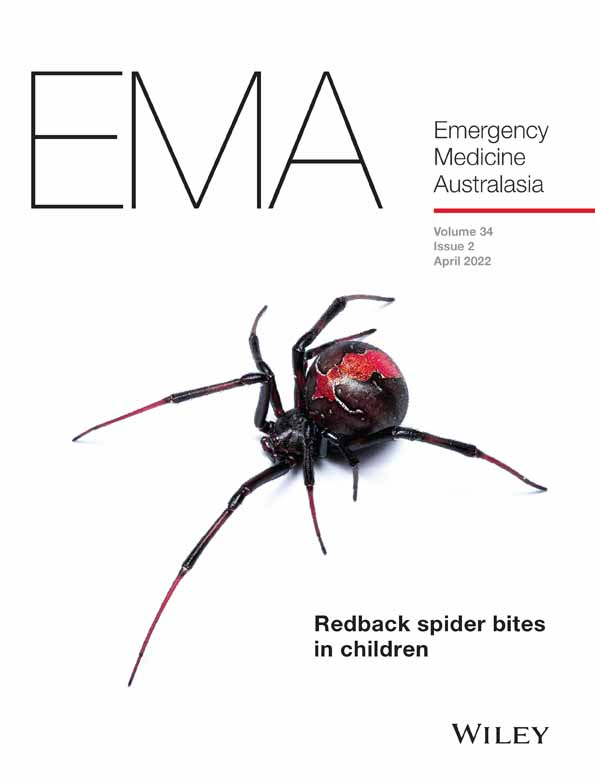Effects of mobile mindfulness on emergency department work stress: A randomised controlled trial
Abstract
Objective
High-occupational stress among ED staff has a detrimental impact on both staff wellness and patient care. The objective of the study is to determine whether 4 weeks of smartphone app-guided mindfulness practice reduces stress levels of ED staff.
Methods
This two-arm randomised controlled trial was conducted in two Australian EDs in 2019–2020. Eligible participants were randomly assigned (1:1) to either an App group or a Wait to Treat group to practice daily 10 min app-guided mindfulness for 4 weeks. Online surveys were collected for both groups at three time periods: before (T1), immediately after (T2) and 3 months after cessation (T3). Then the Wait to Treat group received the same intervention, followed by surveys immediately after the intervention (T4) and 3 months later (T5). Primary outcome was measured using the Perceived Stress Scale. Secondary outcomes were measured using the Maslach Burnout Inventory (three subscales: emotional exhaustion, depersonalisation and personal accomplishment), Mindfulness Attention Awareness Scale and Warwick-Edinburgh Mental Well-being Scale. Both intention-to-treat and per-protocol analysis were performed. Repeated measurement data were analysed by the linear mixed model.
Results
Of 148 enrolled participants 98 completed all the surveys, but only half (48%) reported continuous use of the app. Based on the results of the intention-to-treat analysis, there was a statistically significant improvement of perceived stress levels (F = 15.70, P < 0.001), all three components of burnout (emotional exhaustion [F = 14.22, P < 0.001], depersonalisation [F = 3.62, P = 0.030], personal accomplishment [F = 7.51, P < 0.001]), mindfulness (F = 8.83, P < 0.001) and wellbeing levels (F = 10.71, P < 0.001) from pre-intervention to 3 months later with small effect sizes.
Conclusion
Results of the present study demonstrate that brief mindfulness training via innovative digital technology had a small positive effect in improving emergency staff stress, burnout, mindfulness and wellbeing.
Open Research
Data availability statement
The data that support the findings of this study are available from the corresponding author upon reasonable request.




